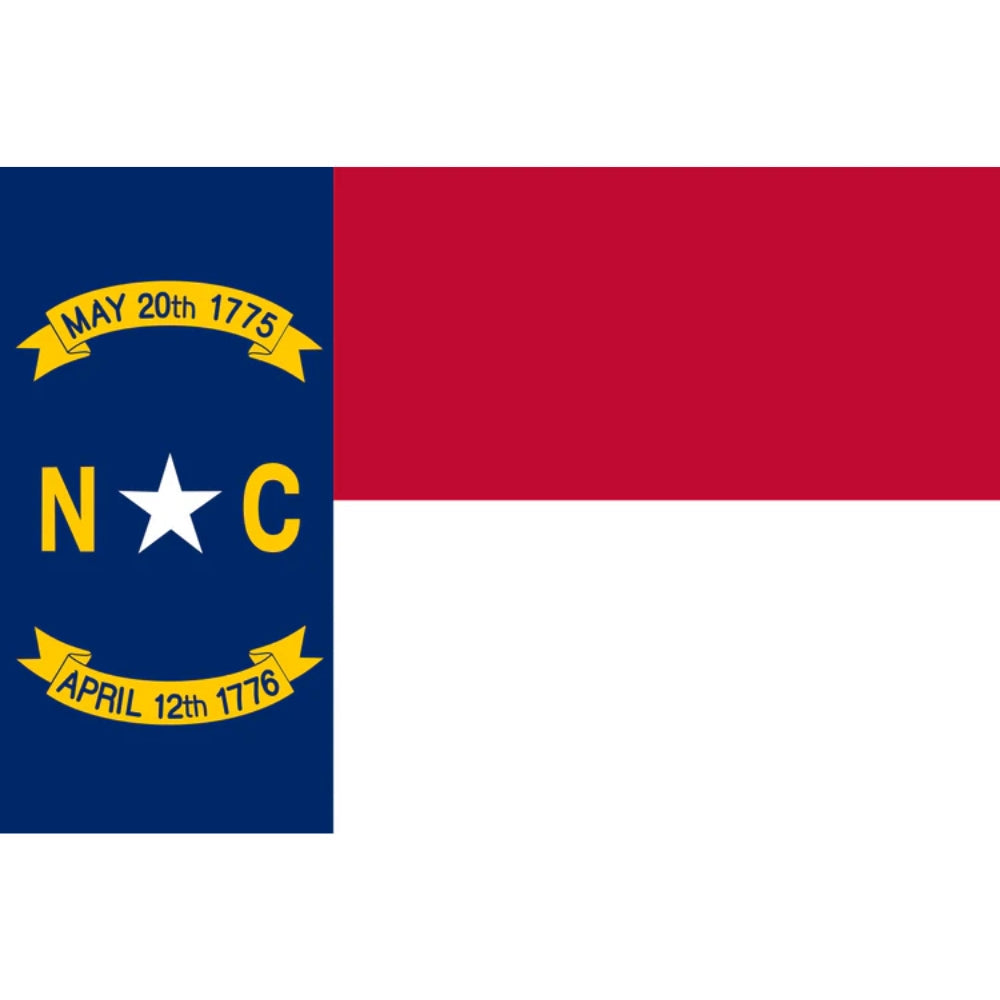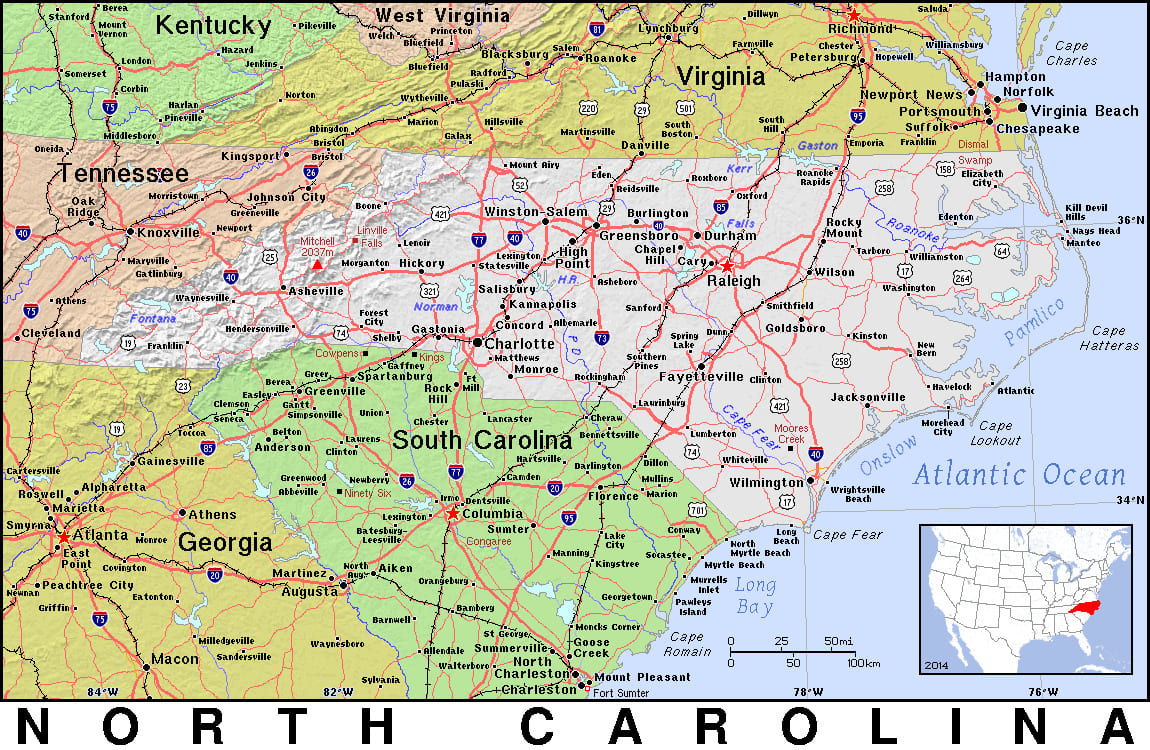Explore the Fascinating History of North Carolina
Take our North Carolina Trivia Quizzes for a Chance to Win a 6-Month Subscription to History By Mail!

The History of North Carolina
Journey Through North Carolina Trivia
Welcome to our North Carolina history and trivia page, presented by History By Mail. Join us as we embark on a journey to explore the captivating past and diverse culture of the Tar Heel State. From the colonial era and Revolutionary War to the birthplace of flight and the iconic Blue Ridge Mountains, we'll uncover some of North Carolina's hidden treasures and challenge your knowledge with engaging quizzes. Let's delve into North Carolina's rich history and trivia together. North Carolina is a remarkable state with a storied history and a vibrant tapestry of traditions. From the first English settlements in Roanoke to the pivotal moments of the Civil War and the civil rights movement, North Carolina has played a significant role in shaping the nation's narrative. Today, the state offers a blend of captivating landscapes, charming coastal towns, thriving cities, and a warm and welcoming community.
Facts about North Carolina
State Name: North Carolina
State Abbreviation: NC
Capital: Raleigh
Name Origin: North Carolina earned the moniker "Tar Heel State" due to the practice of selling tar, pitch, and turpentine extracted from the abundant longleaf pine trees. These valuable materials were utilized in the construction of wooden ships. Legend has it that British soldiers encountered difficulty during the Revolutionary War as they found themselves mired in the sticky tar of North Carolina.
Nickname: The Tar Heel State
Statehood: November 21, 1789 (12th state)
State Motto: Esse quam videri (To be rather than to seem)

North Carolina's Flag
North Carolina lacked an official state flag until the North Carolinian state constitutional convention of 1861, when delegates voted in favor of joining the Confederacy. In this convention, a committee was appointed to devise a flag. On June 22, 1861, the convention ratified the flag's design, which featured a red field with a white star positioned at its center. Above the star, the date May 20, 1775, representing the contentious Mecklenburg Declaration of Independence, was inscribed. Below the star, in a semi-circular arrangement, the date May 20, 1861, symbolizing North Carolina's secession from the Union, was displayed. The flag also included two bars of equal width, one in blue and one in white. Notably, the design closely resembled a suggestion put forth by Raleigh artist William G. Browne.
North Carolina's Great Seal
Originally established in 1893 and subsequently altered, the prominent emblem of North Carolina portrays the forms of Liberty and Plenty gazing towards each other, set against a backdrop of mountains and an expanse of ocean featuring a ship. Positioned atop the seal, positioned between these figures, is the date May 20, 1775, in alignment with the state flag. This significant date corresponds to the Mecklenburg Declaration, an early expression of resistance against British dominion. The state's motto, "Esse Quam Videri" (translated as "To Be Rather Than to Seem"), graces the lower section of the seal.

--- State Trivia #1 ---
History of North Carolina
The region now known as North Carolina was inhabited by hunter-gatherer communities at least 10,000 years ago. Throughout history, various Native American tribes, such as the Cherokee, Woodland, and Mississippian tribes, established their presence in the area.
In the 1500s, European explorers arrived in North Carolina, marking the beginning of European influence in the region. Eventually, in 1789, North Carolina became the 12th colony, shortly after the United States declared its independence from Great Britain. However, on May 20, 1861, North Carolina seceded from the Union and joined the Confederate States of America, which consisted of 11 states that fought against the Union during the Civil War.
State Symbols
Fun Facts
- North Carolina was a haven for the infamous pirate Blackbeard, who plundered ships along the coast during the early 1700s. Additionally, in 1799, a glittering nugget was discovered in the mountains of North Carolina, marking the first gold finding in what is now the United States.
- Fast-forwarding about a century, the pioneering Wright brothers, Wilbur and Orville, achieved the first successful flight of an airplane in the sandy dunes of Kitty Hawk, North Carolina, in 1903. This accomplishment is commemorated on the state's license plates and quarters, bearing the phrases "First in Flight" and "First Flight," respectively.
- North Carolina is also the birthplace of several notable individuals, including jazz pianist Thelonious Monk, President James K. Polk, and quite possibly President Andrew Jackson, who was born on the border of North and South Carolina.
- A visit to the Outer Banks, a chain of islands offering beaches, state parks, and shipwreck-diving sites, is highly recommended. Among these islands, Roanoke Island holds historical significance as the site of the first English colony in the New World. In the late 1500s, the settlers mysteriously vanished, leaving behind the enigma of the Lost Colony, which historians continue to unravel.
--- State Trivia #2 ---

Things To Do in North Carolina
- Explore the Great Smoky Mountains: Visit the Great Smoky Mountains National Park, which spans across North Carolina and Tennessee, and discover breathtaking landscapes, hiking trails, and diverse wildlife.
- Relax on the Outer Banks: Enjoy the pristine beaches and coastal beauty of the Outer Banks, a string of barrier islands offering opportunities for swimming, sunbathing, fishing, and water sports.
- Discover Historic Sites: Visit historical landmarks such as the Biltmore Estate in Asheville, a grand mansion with stunning gardens, or explore the colonial-era town of Wilmington, known for its charming architecture and riverfront.
- Experience the Blue Ridge Parkway: Drive along the scenic Blue Ridge Parkway, a picturesque road that winds through the Appalachian Mountains, offering panoramic views, hiking trails, and picturesque stops along the way.
- Indulge in Southern Cuisine: Sample North Carolina's renowned culinary delights, including barbecue, fried chicken, biscuits, and sweet tea. Explore local eateries and restaurants that celebrate the region's rich food culture.

General Map of North Carolina
North Carolina is situated south of Virginia, east of Tennessee, north of South Carolina, and west of the Atlantic Ocean. When exploring North Carolina, visitors will encounter three distinct regions, each characterized by its unique landscape.
In the western part of the state lies the Appalachian Mountains, the largest mountain range in the eastern United States. These majestic peaks reach heights of over a mile above sea level, offering awe-inspiring views and outdoor recreational opportunities.
Famous People From North Carolina
--- State Trivia #3 ---
FREQUENTLY ASKED QUESTIONS (FAQ) ABOUT NORTH CAROLINA
North Carolina was one of the original 13 colonies and was founded in 1653. It was initially settled by English colonists and played a significant role in the American Revolution. The state ratified the United States Constitution in 1789, becoming the 12th state to do so.
The name "North Carolina" was given in honor of King Charles I of England. The land was originally part of the Province of Carolina, which was named after King Charles II. The Province of Carolina was divided into North Carolina and South Carolina in 1729.
North Carolina's involvement in the Civil War was complex. While the state initially resisted secession, it eventually joined the Confederacy in 1861. The state played a significant role in supplying troops and resources to the Confederate cause. The Battle of Bentonville, fought in 1865, was one of the last major battles of the war and took place in North Carolina.
The Wright Brothers, Orville and Wilbur, made history in Kitty Hawk, North Carolina, on December 17, 1903, by achieving the first successful powered flight in a heavier-than-air machine. Their innovative work marked a major milestone in aviation history and changed the world of transportation forever.
Related Resources
- North Carolina Division of Tourism, Film, and Sports Development: Discover the attractions, events, and outdoor adventures that North Carolina has to offer. Plan your trip and explore the state's diverse regions. Visit: https://www.visitnc.com/
- North Carolina Department of Natural and Cultural Resources: Learn about the state's natural beauty, cultural heritage, and historical sites. Explore museums, parks, historic landmarks, and access educational resources. Visit: https://www.ncdcr.gov/
- North Carolina State Parks: Experience the natural wonders of North Carolina by visiting its state parks. Find information about hiking trails, camping, fishing, and other recreational activities. Visit: https://www.ncparks.gov/
- North Carolina Museum of History: Immerse yourself in the rich history of North Carolina through exhibits, artifacts, and educational programs at the state museum. Learn about the state's past, culture, and contributions. Visit: https://www.ncmuseumofhistory.org/
- Outer Banks Visitors Bureau: Plan a visit to the scenic Outer Banks region of North Carolina. Explore the beautiful beaches, lighthouses, wildlife refuges, and historical sites of this popular coastal destination. Visit: https://www.outerbanks.org/






